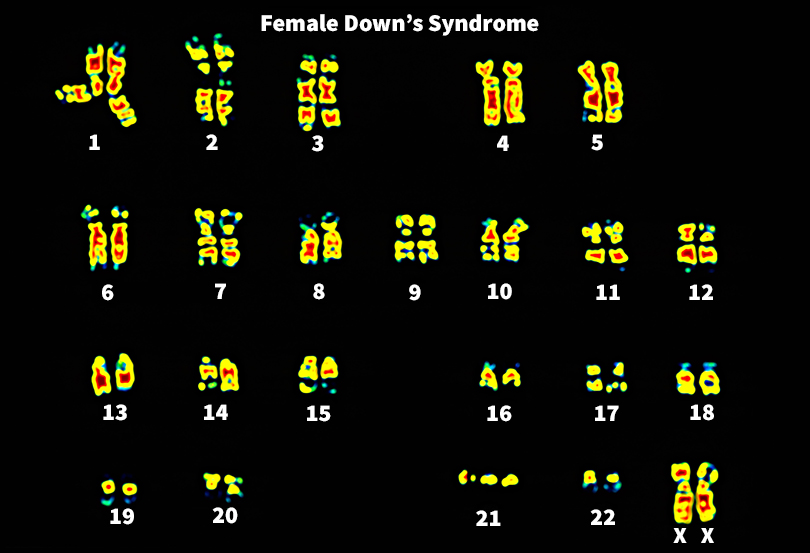Aneuploidy, << AN yuh ploy dee, >> is the condition of having more than, or less than, the normal number of chromosomes. Chromosomes are threadlike structures found in cells of all organisms. Chromosomes are the carriers of inheritance—that is, the physical or behavioral characteristics offspring receive from parents. In human beings, aneuploidy is a major cause of miscarriage, birth defects, and cancer.

Each human body cell, except for sperm and egg cells, typically has 46 chromosomes. Sperm and egg cells have 23 chromosomes each, including 1 sex chromosome. Sex chromosomes are known as X or Y chromosomes, and they determine an individual’s sex. When a sperm and an egg combine in a process called fertilization, they produce a single cell—the fertilized egg—with 46 chromosomes, or 23 similar pairs. When a Y-carrying sperm fertilizes an egg, the baby will be a boy (XY). If the sperm has an X chromosome, then the baby will be a girl (XX). The 46 chromosomes of an individual can be organized into a profile called a karyotype. In a karyotype, the chromosomes are arranged according to size and are written as 46,XX to describe a female and 46,XY to describe a male.
Aneuploidy often results from a process called nondisjunction, in which chromosome pairs fail to separate during cell division. If nondisjunction occurs, the resulting body cells will have an abnormal number of chromosomes, too many or too few. Scientists believe this condition can cause some cells to turn cancerous. If a sperm or egg cell resulting from nondisjunction is fertilized, all of the cells of the resulting fetus will have an abnormal number of chromosomes.
Aneuploidy in human beings typically occurs as monosomy, in which one chromosome from a pair is missing, or trisomy, in which an extra chromosome is present. One fairly common type of monosomy, called Turner syndrome, is a genetic disorder that affects only females. Individuals with this condition have only one X chromosome in some or all cells instead of the normal two. People with Turner syndrome are infertile and usually short in height. Other abnormalities may be present, but intelligence is usually normal. Most other forms of monosomy in human beings result in death shortly after birth or in miscarriage.
Trisomy 21, or Down syndrome, is a common trisomy in human beings. Individuals with Down syndrome have an extra chromosome with the pair that has been designated as chromosome 21. These individuals have characteristic physical features and mild to moderate intellectual disability. Trisomies of chromosomes 13 and 18 also occur in human beings. Individuals with these trisomies have many abnormalities and rarely survive infancy.
Sex chromosome trisomies, which involve chromosomes X or Y, also occur in human beings. Males with Klinefelter syndrome (also known as XXY males), have an extra X chromosome in addition to the normal XY chromosomes. These individuals may have learning disabilities, and are usually tall, have rounded bodies, and sparse facial and body hair. They may also develop enlarged breasts and other female characteristics.
Aneuploidy can be detected before and after birth through genetic tests. Two tests that provide direct examination of an unborn baby’s chromosomes are amniocentesis and chorionic villus sampling. Scientists estimate that almost 5 percent of all human conceptions are aneuploid. In addition, as many as 50 percent of all miscarried fetuses have abnormal chromosome numbers. The incidence of aneuploidy increases with maternal age, so that women older than age 34 are at increased risk for having an aneuploid fetus.
See also Amniocentesis ; Birth defect ; Down syndrome ; Genetic counseling ; Miscarriage .
